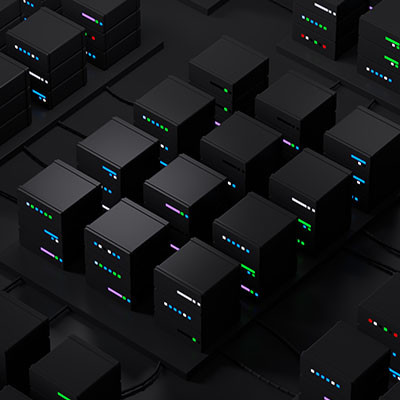We cover data backup and disaster recovery quite a bit, and you might be familiar with some of the terms and strategies we discuss. Today, we’re taking a deeper dive into the 3-2-1 rule and its crucial role in your business’ disaster recovery plan. Let's explore how the 3-2-1 rule can strengthen or weaken your data infrastructure.
Computerware Blog
There is an almost comical laundry list of problems that all businesses should be prepared for, but what’s not funny whatsoever is what happens when you fail to do so. The term “BDR” is often used as an umbrella term to describe what kind of preparation your organization needs, and today, we want to dive into some of the details that you should know.
Whether you like it or not, change comes for us all—particularly for businesses. Any organization that hopes to see any significant growth or innovation will be subject to change. Your organization should be capable of working with change, and when it comes to factors that can influence how well you adapt to change, there is no greater tool than your company’s IT.
How often do you struggle to talk about potential issues your business faces when you reach out to IT for help? Conversing with technicians can be especially challenging when you don’t necessarily understand the problem yourself, either. Thankfully, we have some tips to help you lead more productive conversations with your IT staff or managed service provider.
If there’s one part of any organization’s operational expenses that concerns many business owners, it’s IT expenses. In fact, some companies have so little control over their IT expenses that they practically hemorrhage money, leading to limited capacity for growth and investment in other parts of the organization that desperately need the help. How can you fix your IT spending and improve your organization as a whole?
It all starts with a network audit and some intelligent future planning. Let’s review some of the most important work you can do to help your business better budget for IT expenses.
Today, we encounter situations in business where digital communication is preferred by many people, and as a result, the use of smartphones to conduct business has become more common. With this shift in the way people do business, there are several considerations that the modern worker has to navigate to properly use smartphones to their advantage. Let’s take a look at a few in today’s blog.
Have you ever tried to introduce new technology to your team, only to have your efforts at improving your business’ efficiency bounce off of your apathetic and frustrated employees who just don’t see the benefits? You’re not alone; it’s difficult to teach old dogs new tricks, as they say. Granted, it’s not impossible, and your team can (and should) be able to get on board with any new implementations, provided you do some initial legwork.
Your business runs on its data, and as such, you need a sound strategy for sharing files and other important information to ensure collaboration goes off without a hitch. You must also do all of this while protecting your sensitive data. What are some best practices that SMBs can utilize for file sharing? Let’s go over them.
We like to espouse the value of a trained and engaged remote workforce, but there is a lot that goes into ensuring that your remote team has the tools and resources they need to be successful. Let’s discuss some of the ways your business can build a remote workforce and company culture that not only encourages remote employees, but helps them thrive as well.
Smartphones are incredible productivity tools that anyone can take advantage of for personal computing or business purposes. Thanks to the large amount of mobile applications available, there are countless ways that people can reimagine various aspects of their lives for the better. To help you out, we’ve put together four of our favorite smartphone tips that you might find useful.
You and your employees are likely exhausted from dealing with technology day in and day out. Even if it is what allows businesses to flourish, you still might want some time away from it from time to time. When it feels like too much, know that a digital detox can be a valid way of temporarily moving away from technology—even in the workplace.
With the right technology at your side, you can ensure that your operations, productivity, and customer satisfaction are maximized. However, even with all these benefits, small businesses make mistakes, particularly in regard to the implementation process. How can your business overcome the hurdles that stem from improper technology implementation strategies? Let’s take a closer look.
Technology is center-stage in today’s business world, and when all it takes is a disaster to end operations for many businesses, it suddenly becomes incredibly important to have contingency plans in place… you know, just in case. Let’s go over how you should build an effective disaster recovery plan, as well as how to assess your company’s needs.
Are you sure that your business can control all of its data? Are you absolutely certain that it can be accessed when needed? Can you guarantee that it’s as secure as humanly possible, wherever it happens to be? You should be able to answer these questions with an unequivocal and resounding “yes,” yet central data management is far from a simple task.
If your business could go about its daily tasks without having to worry about technology, you would find yourself suddenly much more productive and efficient. Think of all the time and money you could save by not reacting to technology problems. With the right tools and approaches, your company can make great strides toward a more proactive technology management model.
If you find yourself in a position where your business has been hacked, it can be devastating for productivity and efficiency, not to mention the security of your company’s assets—personnel or otherwise. It’s quite easy for even seasoned professionals to expose themselves to these attacks, so how should you respond if you’re the one who has been hacked? That’s what we’re going to discuss today.




















